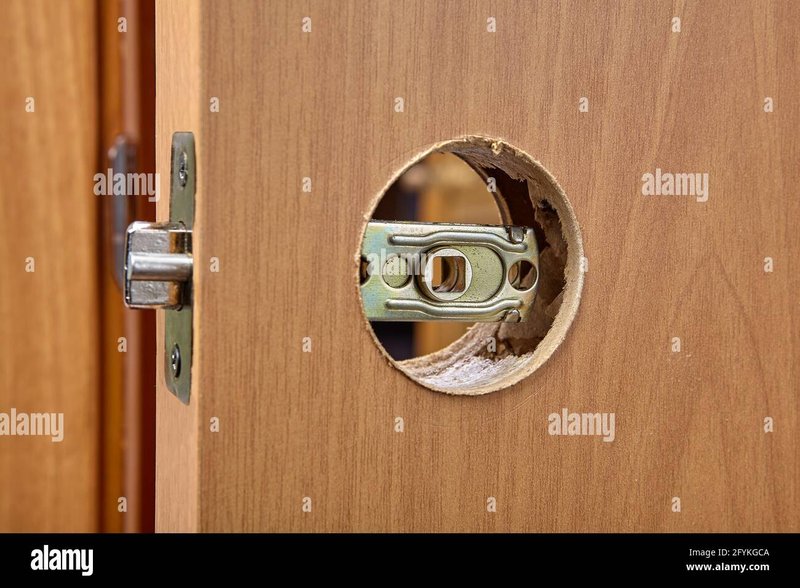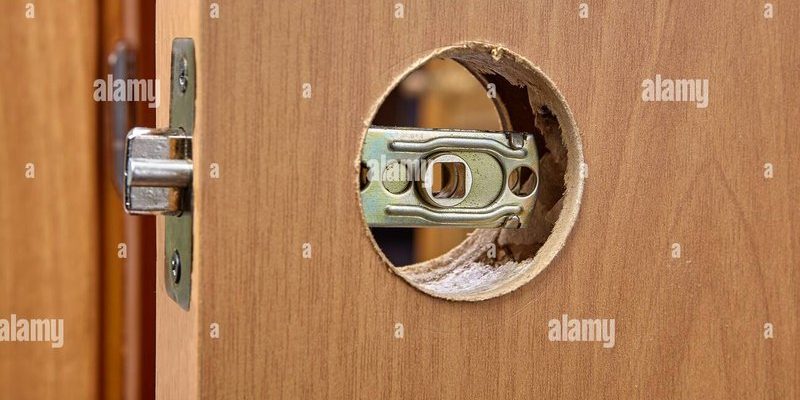
You can typically find a door latch mechanism in various types of interior doors, from bedroom doors to bathroom compartments. It’s one of those behind-the-scenes parts that often goes unnoticed until it malfunctions. So, how do you tackle this issue? Don’t worry; you’re not alone in this. I’ll guide you step-by-step through cleaning corrosion from your door latch mechanism and getting it back in shape.
What Causes Corrosion in Door Latch Mechanisms?
Corrosion is a sneaky adversary. It often starts small but can spread quickly if not managed. In the case of door latch mechanisms, corrosion usually comes from moisture and humidity. Here’s the thing: when metal parts come into contact with moisture, especially in humid environments, they can start to rust. This can be exacerbated by poor ventilation or if the door is exposed to the elements.
Interior doors might also face their own challenges. Even in dry environments, things like spills, cleaning products, or even a bathroom’s steam can lead to corrosion. In short, anything that introduces moisture over time can set the stage for corrosion. If you’re starting to notice sticky or stiff door latches, you probably have some corrosion brewing.
Gathering Your Cleaning Supplies
Before diving into cleaning, it’s best to gather the right tools. Think of this as prepping for a small project. You certainly don’t want to get halfway through and realize you forgot something important. Here’s a simple list of what you’ll need:
- White vinegar or lemon juice: These are great natural acids that can help dissolve rust.
- Wire brush or toothbrush: For scrubbing away corrosion.
- Old rags: These are essential for wiping down surfaces.
- Lubricating oil: After cleaning, a good lubricant will help keep the mechanisms moving smoothly.
- Protective gloves: Always a good idea to protect your hands.
Gather everything in one spot, and you’re ready to roll. Having your supplies handy makes the entire process much smoother.
Removing the Door Latch Mechanism
Now, let’s get to the core of the cleaning process: removing the door latch mechanism. It sounds like a big deal, but it’s quite straightforward. You might wonder if you really need to take it apart. Honestly, it’s helpful to clean it thoroughly if you see signs of corrosion. Here’s how to approach it:
1. Unscrew the latch plate: Use a screwdriver to remove the screws holding the latch plate in place. Once you’ve taken out the screws, gently pull off the plate.
2. Detach the knob: If your door latch has a knob, you may need to remove it by unscrewing the fastening on the side or the bottom, depending on your door’s model.
3. Carefully pull out the mechanism: Once the knob is off, you should be able to slide the latch mechanism out of the door.
Before moving on, take a moment to inspect it for any major damages. If the latch is severely corroded, you might want to consider replacing it altogether. But if it’s just a bit rusty, cleaning it up should do the trick.
Cleaning the Corrosion
Here we go! Time to roll up those sleeves and tackle the corrosion. Depending on how severe the rust is, you have a couple of methods to try.
1. Use white vinegar or lemon juice: Soak a cloth or rag in white vinegar (or lemon juice) and wrap it around the corroded areas. Let it sit for about 30 minutes to an hour. The acidity will help break down the rust.
2. Scrub gently: After letting it soak, use your wire brush or toothbrush to scrub away the corrosion. Be gentle, as you don’t want to scratch the metal too much. Rinse with water afterward and dry it well with an old rag.
3. Repeat if necessary: Sometimes, you might have to repeat this process a couple of times, especially if the corrosion is stubborn.
Remember, patience is key. You want to make sure you get rid of as much corrosion as possible for the best results.
Lubricating the Mechanism
Once you’ve cleaned off the corrosion, you’re on the home stretch! Now, you need to lubricate the door latch mechanism to ensure it operates smoothly. Here’s how to do it properly:
1. Choose your lubricant: A multi-purpose lubricant like WD-40 or a silicone-based spray works well. Just avoid thick oils that can gunk things up over time.
2. Apply evenly: Spray or apply the lubricant evenly on the moving parts of the latch. Make sure to cover all areas, especially where metal rubs against metal.
3. Work in the lubricant: After applying, work the mechanism back and forth to distribute the lubricant evenly. This helps it settle into all the little nooks and crannies.
A well-lubricated door latch not only feels better but can also help prevent future corrosion!
Reinstalling the Door Latch Mechanism
You’ve done the dirty work, and now it’s time to put everything back together. Here’s how to reinstall the door latch mechanism:
1. Slide the latch back into place: Carefully insert the latch mechanism back into the door where it was removed. Make sure it aligns correctly.
2. Reattach the knob: If you removed a doorknob, now is the time to reattach it and ensure it’s secure.
3. Screw the latch plate back on: Finally, restore the latch plate by securing it with the screws you took out earlier. Ensure everything is tightly fastened.
Once it’s all back together, test the door to see how smoothly it opens and closes. A well-maintained latch should glide effortlessly.
Preventing Future Corrosion
Now that you’ve cleaned up and restored your door latch mechanism, let’s talk about keeping it that way. Taking a few preventive steps can go a long way in avoiding future corrosion issues:
1. Regular inspections: Check the latch for signs of rust or corrosion every few months. Early detection means easier cleaning.
2. Keep it dry: If you live in a humid environment, consider using a dehumidifier in rooms where moisture tends to linger.
3. Use silicone spray: Instead of oil, consider a silicone-based spray for lubrication. It not only lubricates but also creates a barrier against moisture, reducing the likelihood of rust.
4. Mind your cleaning products: When cleaning your doors, avoid harsh chemicals that can strip protective coatings on metal parts.
By staying proactive, you can keep your door latch mechanism functioning well for years to come.
In closing, maintaining your interior door latch mechanism isn’t as daunting as it might first seem. A little cleaning, some lubrication, and a touch of preventive care can save you from frustration down the road. If you ever feel overwhelmed, just remember this guide and take it one step at a time. Your door will thank you!
